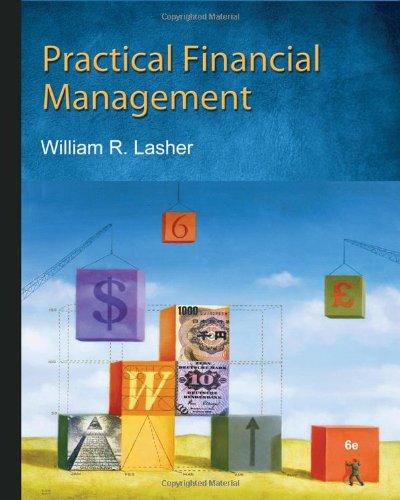Question
PART I: Suppose a firm is considering the following project (all figures in $ thousands): To undertake the project the firm will need to make
PART I:
Suppose a firm is considering the following project (all figures in $ thousands):
To undertake the project the firm will need to make a one-time investment of $137,500 in year 0. This specialized equipment can be depreciated using the straight-line method over the seven years, with a salvage value of $5,600 in year 7.
Your sales and marketing team tell you that they estimate sales of 7,500 units in year 1, rising by roughly 35% per year through year 5, then declining by 45% each year through year 7. They assume the product is dead at that point, with 0 units demanded/sold in year 8.
The inflation rate is forecast to be 1.5% in year 1, rising by a constant to 2.8% in year 5, then leveling off. The firm's real cost of capital is forecast to be 9.3% in year 1 and projected to increase by 2.5% each year through year 7. The tax rate is estimated to be a level 39%.
Sales revenue per unit is expected to be $15.30 in year 1. Variable cost per unit is estimated at $10.20 in year 1. Cash fixed costs will be $17,940 in year 1. All will grow with inflation.
What is the project NPV under these assumptions?
PART II:
Consider the same problem as above, but modify it as follows:
Direct labor, materials, selling expenses, and other variable costs are forecast to be $5.20, $3.05, $2.30, and $0.80, respectively in year 1 and grow with inflation.
Lease payment, property taxes, administration, advertising, and other cash fixed costs are expected to be $6,100, $1730, $4680, $2,120, and $2730, respectively in year 1 and grow with inflation.
What are the Total Variable Cost per Unit and Total Cash Fixed Costs in year 7?
PART III:
Consider the same problem as in Part II. Assume that the product life-cycle of seven years is a reasonable bet, but you are concerned about the real demand for your product. This is a fairly new product, and demand may be more or less than your sales team believes. Further, if this (and other) risky projects take longer than expected, the firm's cost of capital may increase (because you are a 'riskier' borrower to your creditors).
Analyze the sensitivity of your project (NPV) to the unit sales factor and to the cost of capital. Draw some conclusions about the project given your sensitivity analysis. Your boss wants to know whether it's a go or not, why you think so, and about which assumptions you are most concerned. Please explain.
Step by Step Solution
There are 3 Steps involved in it
Step: 1

Get Instant Access to Expert-Tailored Solutions
See step-by-step solutions with expert insights and AI powered tools for academic success
Step: 2

Step: 3

Ace Your Homework with AI
Get the answers you need in no time with our AI-driven, step-by-step assistance
Get Started


